How WFP Is Reducing Food Waste and Hunger
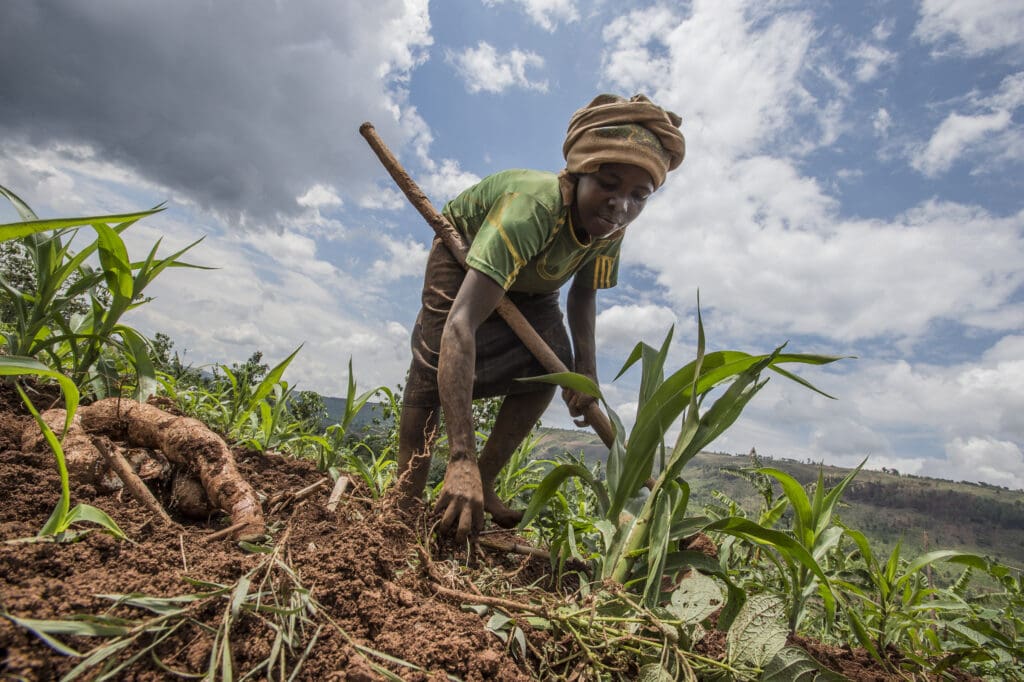
These days, food waste and loss are popular topics. Food waste often describes food wasted once it hits our tables, while loss refers to food that spoils before it hits the market. It’s food loss that Johnson Kagoye has been committed to for the past five years. First as a program officer, now as a government partnerships officer with the World Food Programme (WFP) in Uganda, Johnson was hired to help farmers reduce their post-harvest losses that contribute to food insecurity. During his recent trip to the U.S., we sat down to discuss Johnson’s work, the tremendous progress WFP is making in reducing food waste and hunger in Africa, and why silos hold much of the solution.
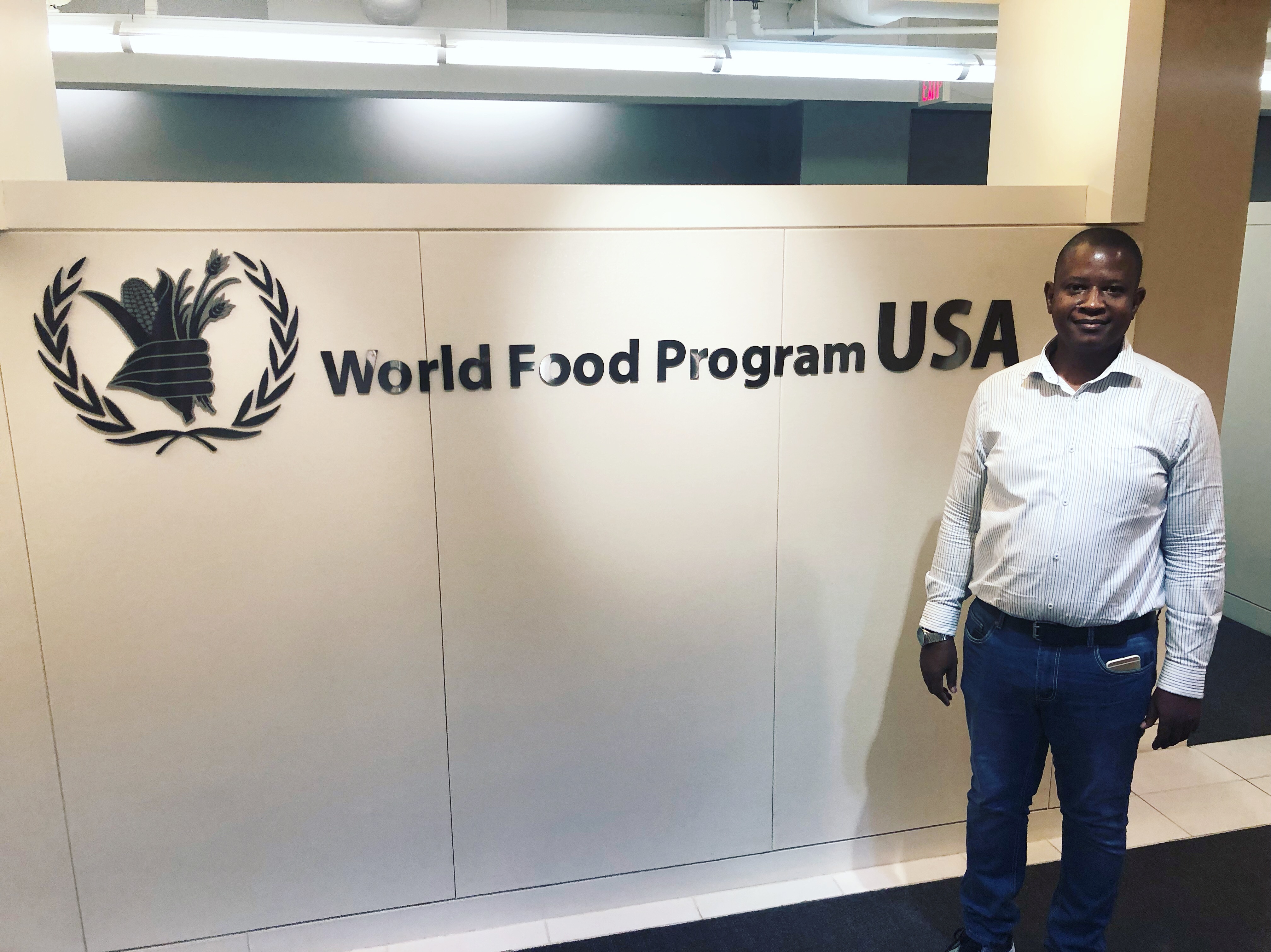
Johnson Kagoye, WFP government partnerships officer.
WFP USA: What’s a problem regarding food waste you’re trying to solve right now?
JK: In Uganda and across Africa, the biggest contributor to food waste is post-harvest loss. About 40 percent – minimum – of farmers’ harvests are lost in the first three months from insects, rodents and mold. Crops spoil so fast, that it’s almost a race to see who can consume crops first – the pests and disease, or farmer and their family. After two months, there’s almost no good food left – and then it’s still four months until the next harvest.
Consequently, quick spoilage is not only a loss of income, but a loss of critical food. Most of the farmers we work with are small-scale. They use their harvest to feed their families and hope to have a little left over to sell.
It’s also worth noting that the estimated cost of these losses is $4 billion a year – which is more money than the entire continent of Africa receives in food aid any given year.
WFP USA: How are you working to solve this problem?
JK: The most effective solution to these problems is proper storage for crops after harvest. Think about it from your own perspective. Most likely, you own a refrigerator. But without that refrigerator, how would you keep food from spoiling? It would be hard. So essentially, we needed to develop something that kept harvests from spoiling – much like your fridge protects your food.
In 2014, WFP brought me on to start researching the best storage solutions. My team and I went to the drawing board, came up with some designs of what we thought might work, and then started looking for air tight containers that matched these ideas.
We started with donated containers from local Coca-Cola and Pepsi plants. We developed an air tight lid for them and tried them out. It worked. Farmers were absolutely shocked to open the bins after two months and find their crops in perfect condition for consumption. With the proven concept, and their buy-in, we then needed to find ways to scale the idea. We came up with further designs and found private sector partners to help bring them to life. We now have three different types of storage technologies to offer farmers: airtight bags, plastic silos and metal tanks.
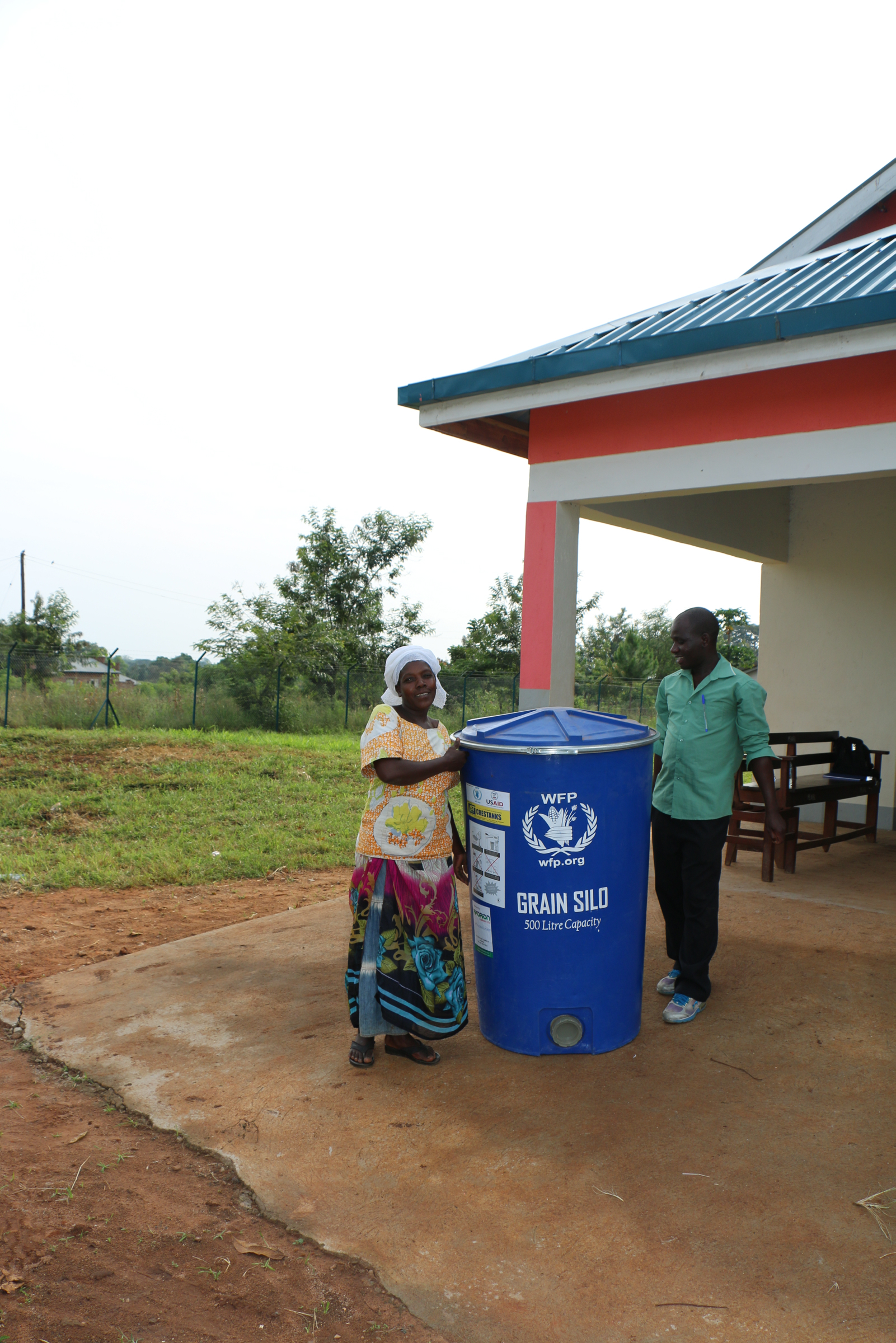
A female farmer picking up her WFP silo to take home and prevent post-harvest loss.
WFP USA: How have farmers responded to these solutions?
JK: Farmers are grateful for and excited about these solutions. Initially, WFP subsidized the container cost for farmers. We started with a few thousand farmers in Uganda. After the first year, we reached 16,000 in six months. Now, five years on, we’ve reached 325,000 participants in Uganda alone – and only 150,000 of those received subsidized equipment. Because of the success of the program, farmers began investing in the storage technology on their own.
WFP USA: Do you have any specific stories of farmers who have benefited from this program?
JK: There are hundreds! It’s hard to pick just one. Because of the food storage bins and bags, farmers have plenty of food between harvests and are able to sell their surplus to make some extra income. Not only that, but they can now also time their sale to take advantage of higher market prices, rather than rush to sell food at the time that crops are harvested, and the market is flooded with sellers. They can wait and sell crops at the most lucrative time, and then reinvest those gains in their families, farms and equipment.
There’s one farmer group who banded together with other farmers to purchase 30 metal silos. They buy food from local farmers when the supply is high, store it, and sell it when market prices go up. It’s resulted in a significant increase in income and standard of living for their community.
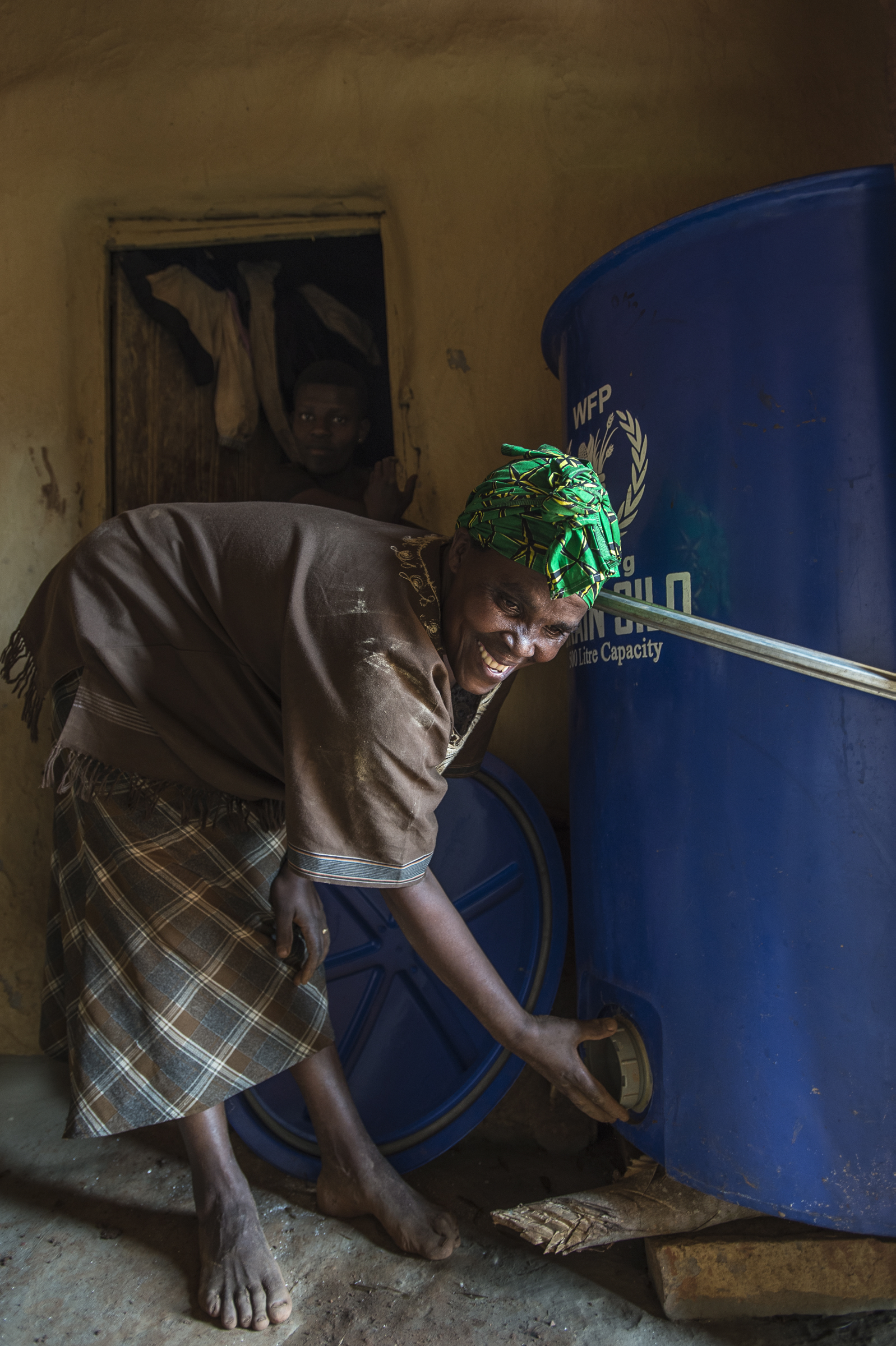
Joyce, a small-scale farmer in Rwanda, explains how she will use her plastic silo to store her next maize harvest.
WFP USA: What about women – do these post-harvest loss solutions empower them at all?
JK: Yes. When we first began this project, we decided that 65 percent of the farmers reached should be women. Most farm activities in Uganda are done by women – they harvest, clean and cook the crops. And research shows that when women are able to earn more income, they are more likely to put that income back into their families.
WFP USA: What are your biggest challenges, currently, to this program?
JK: The biggest challenge by far is to secure funding. We’re surviving hand to mouth at the moment and looking for donors to help us stay afloat.
For the farmers, specifically, funding is a challenge as well. Interest rates in Uganda are around 25 percent, which often makes getting a loan for containers unaffordable. Right now, most families are using our air tight plastic bag, which is the smallest solution and costs around 50 U.S. cents. The larger plastic and metal silos – approximately $70 and $118 respectively, are more effective, but out of reach for many.
We’re currently working with the private sector to make these solutions more affordable. We’re confident that if companies see the market these products can provide, they will be more open to making them more accessible to farmers.
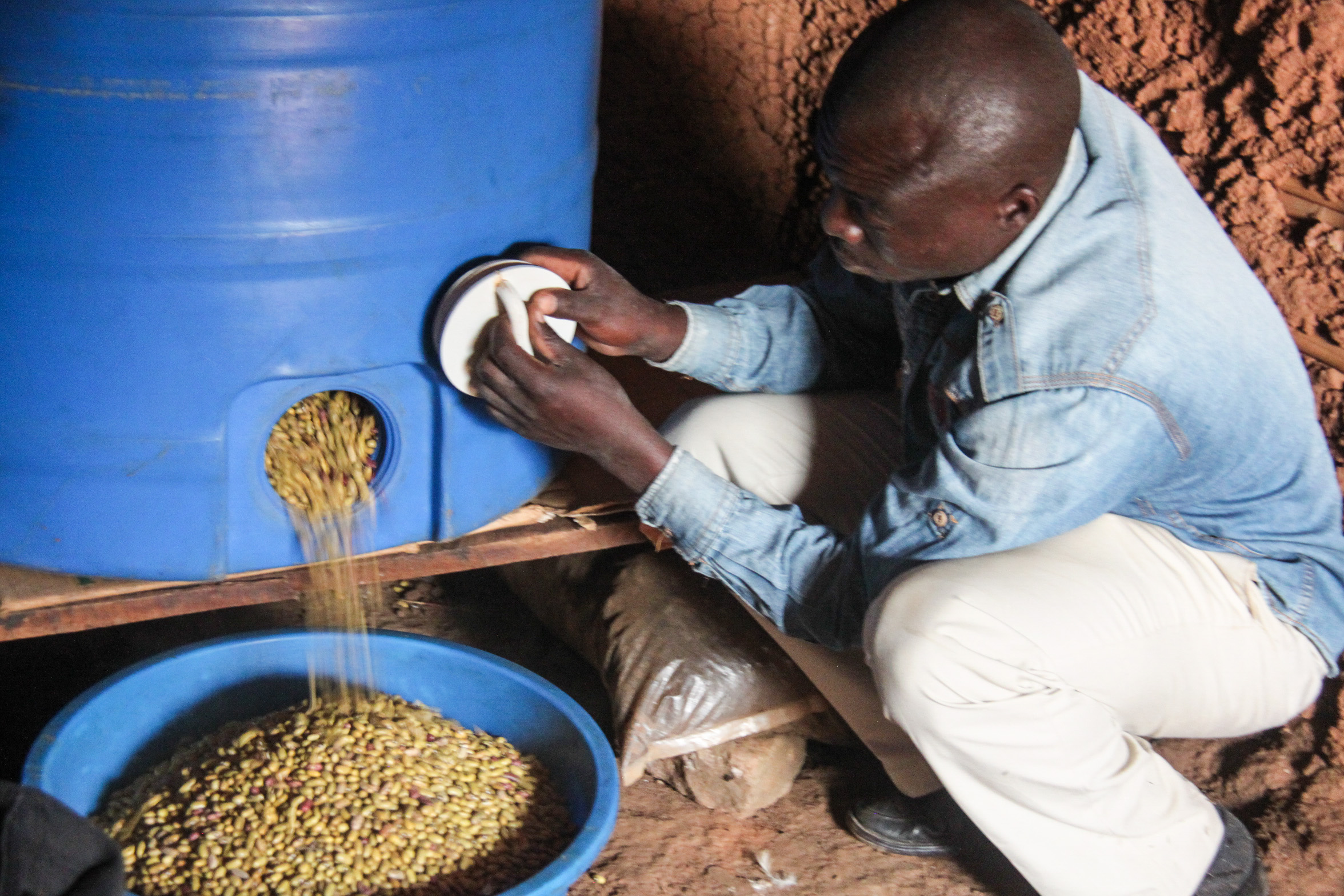
A farmer in Uganda uses a silo to store his crops.
WFP USA: What inspires you to do this work?
JK: I didn’t grow up in a village – I grew up in the city – but I have a background in agriculture. I’m actually a veterinarian. When I finished university, I was recruited by Uganda’s Minister of Agriculture and sent to remote areas of the country to help farmers with their animals.
Through my work, I came to learn that these farmers depended on their animals and crops to survive. If they didn’t earn anything, they couldn’t look elsewhere for work, they simply wouldn’t have anything to eat. This made me passionate about dedicating my life to helping small-scale farmers prosper – which I’m now doing through my post-harvest loss work at WFP.
WFP USA: What are your ultimate goals for this project?
JK: Our goal is to scale this project throughout Africa – and hopefully the world. Right now, we’re operating in 12 African countries and 5 million households. Our goal is to reach 100 million households. We believe 100 million is the tipping point to when people will start seeking these solutions without WFP’s intervention, and the private sector will start developing products to meet their demand at the right cost.
In the meantime, we’re doing what we can to work with the private sector to continue to get funding and infrastructure support to move this program forward. But I’m excited that we’ve already made a difference in the lives of thousands of families – and about the potential of this project to further create a more sustainable and hunger-free future.




